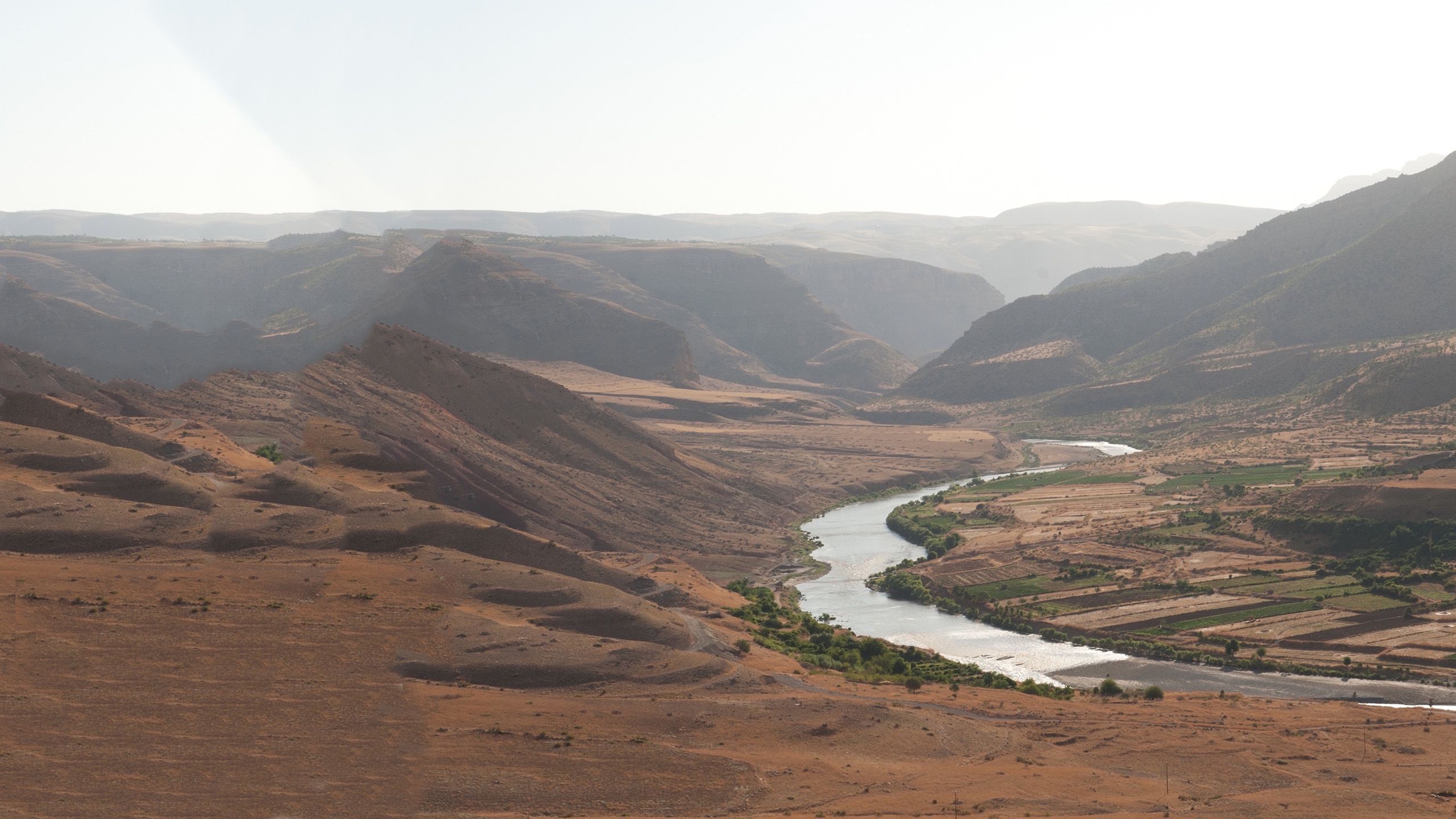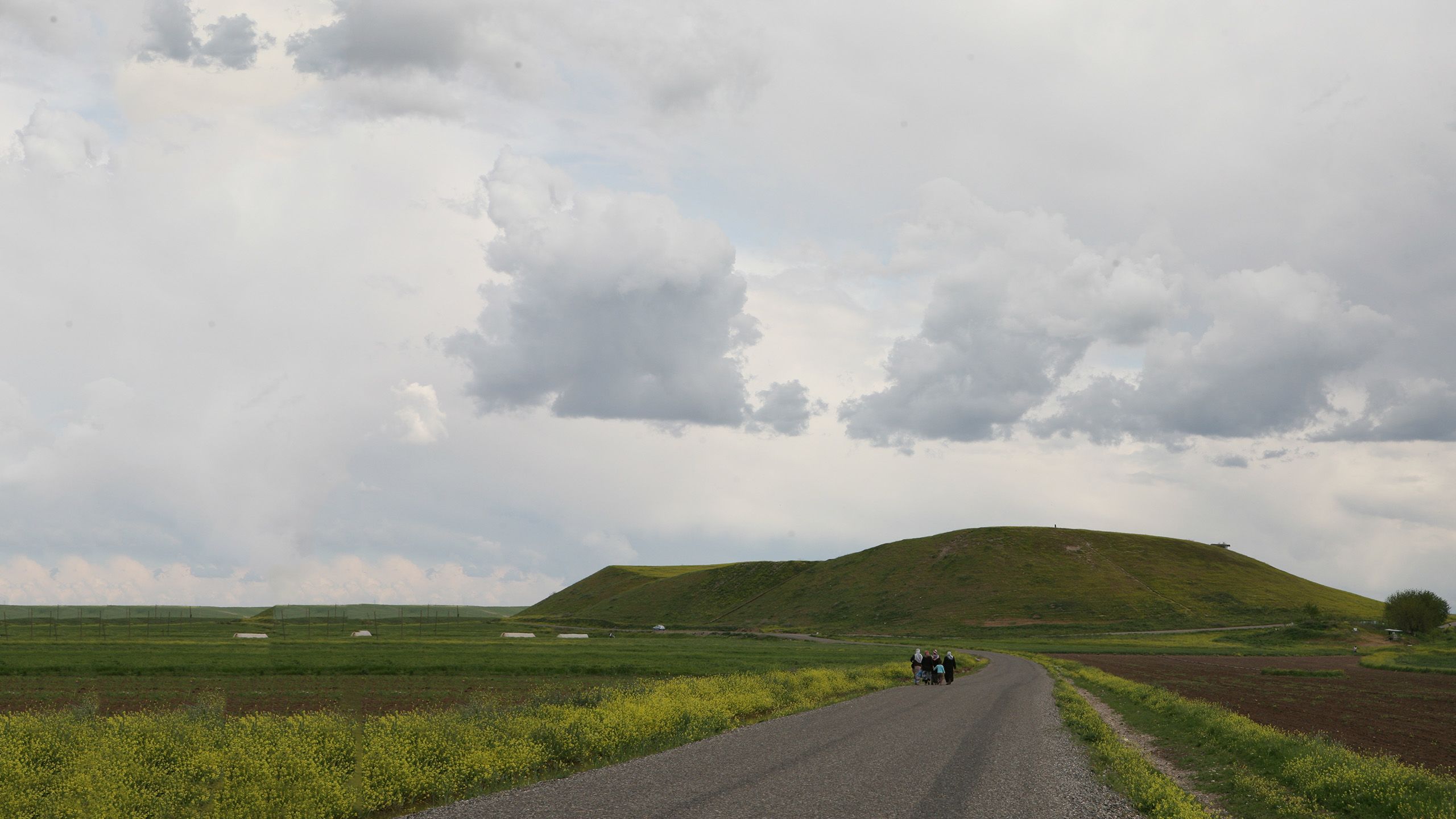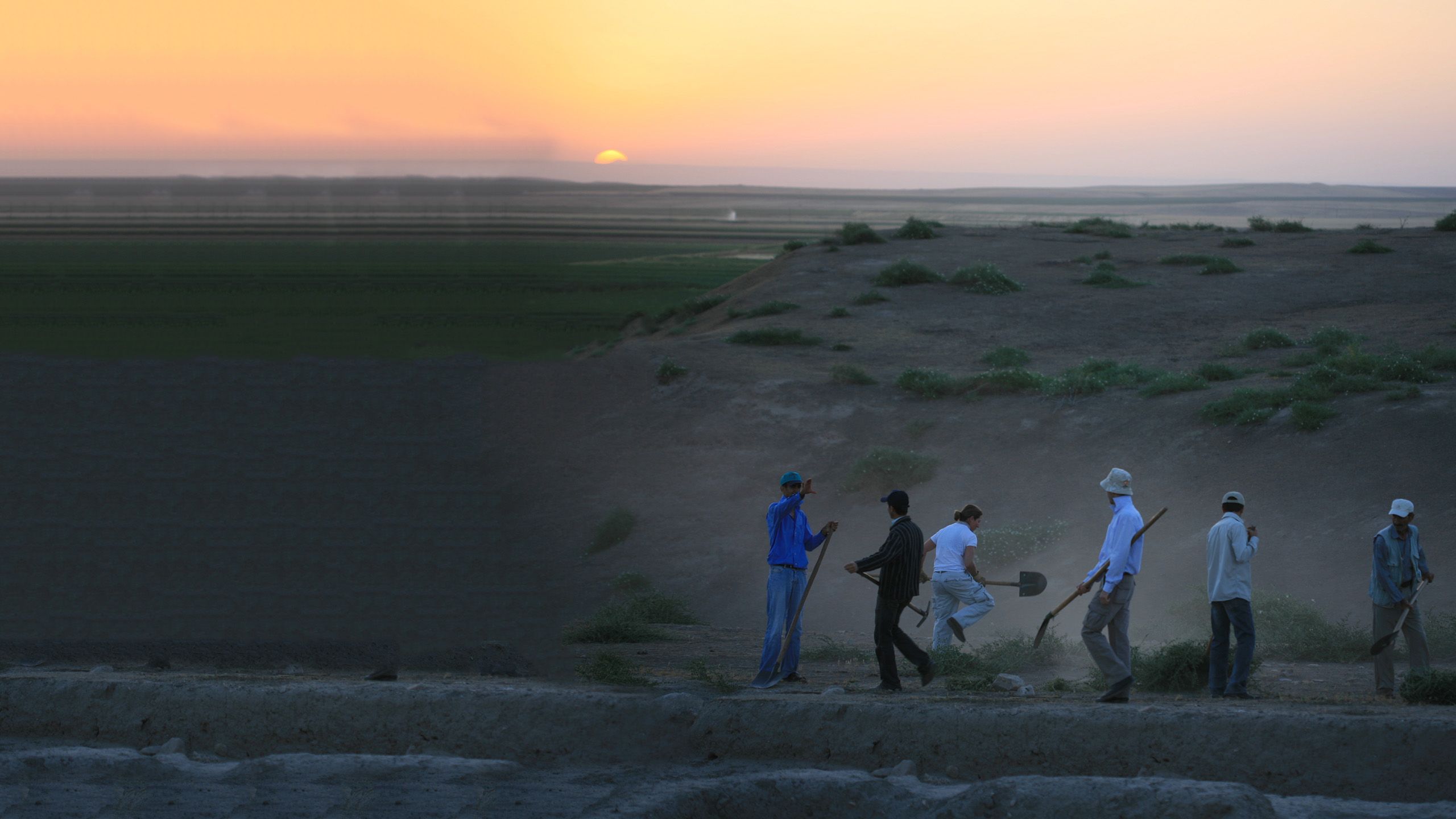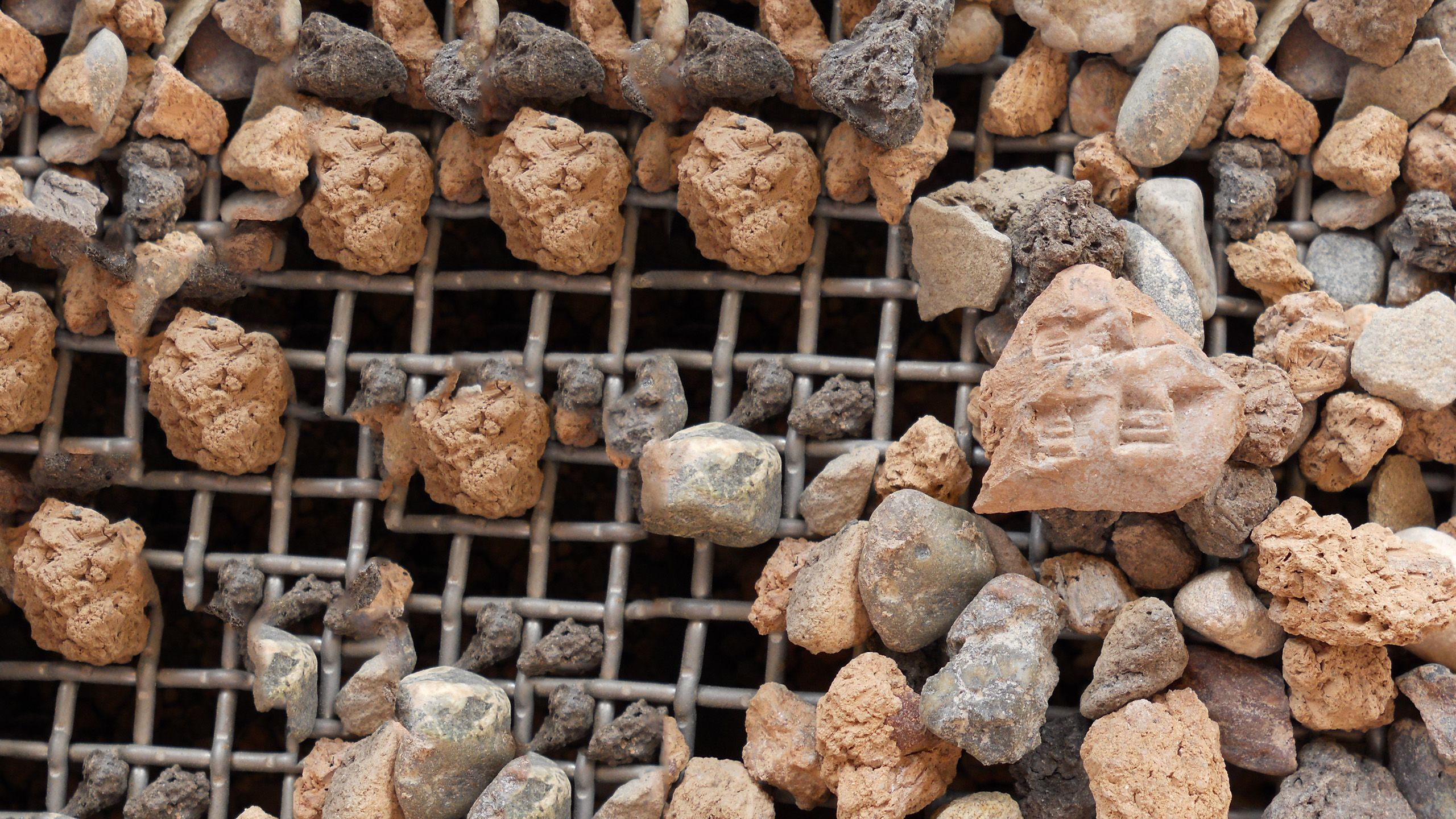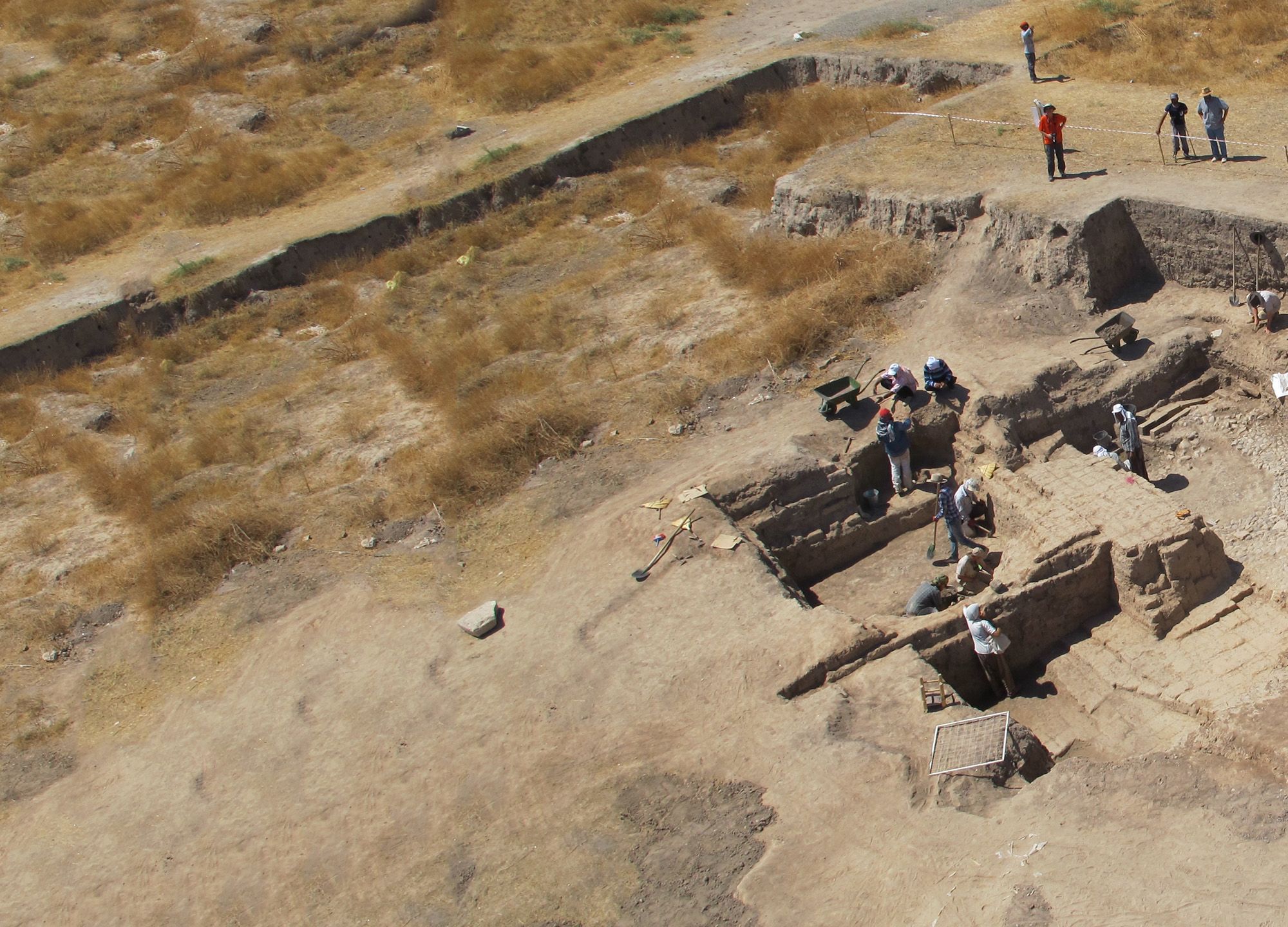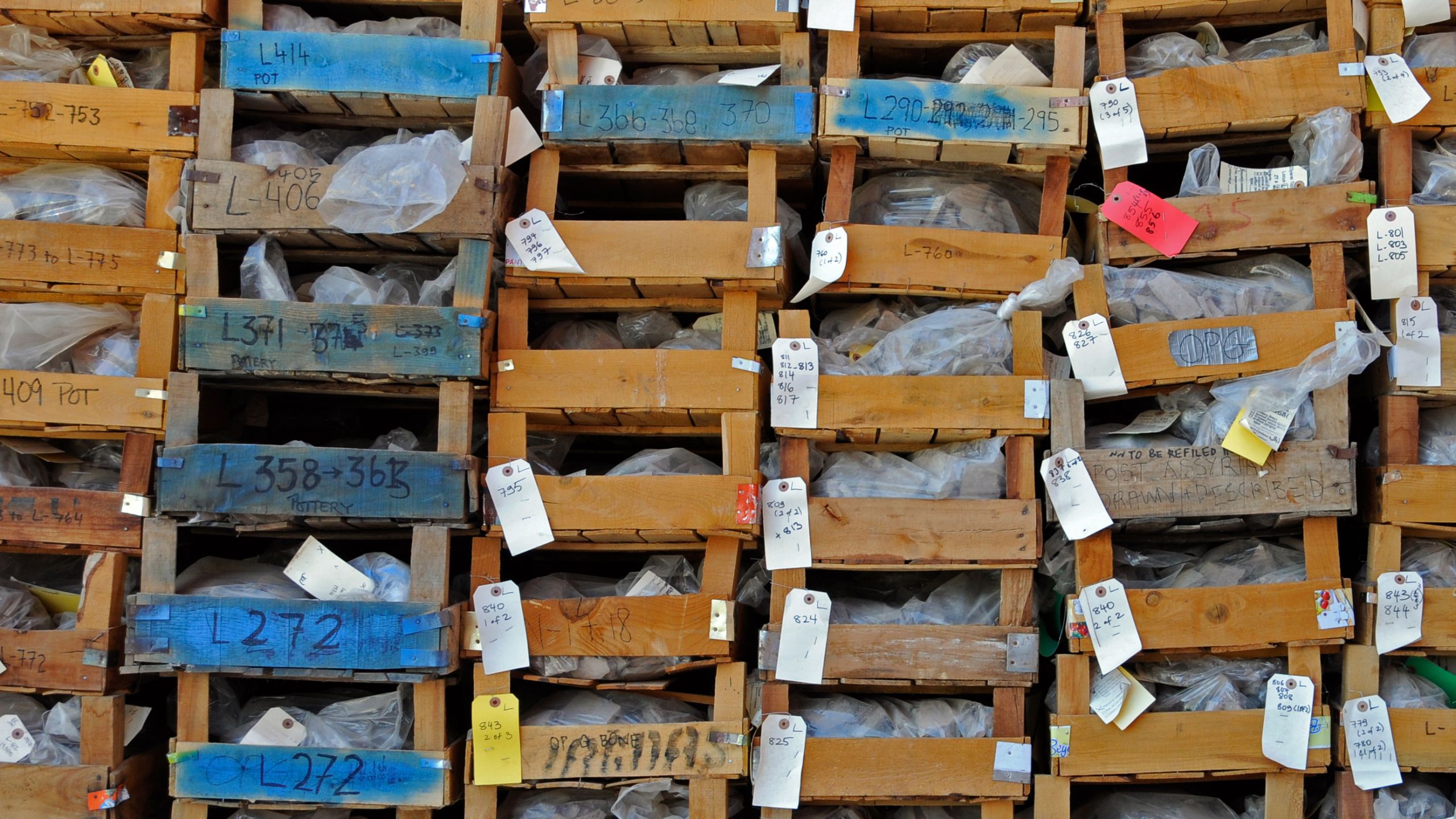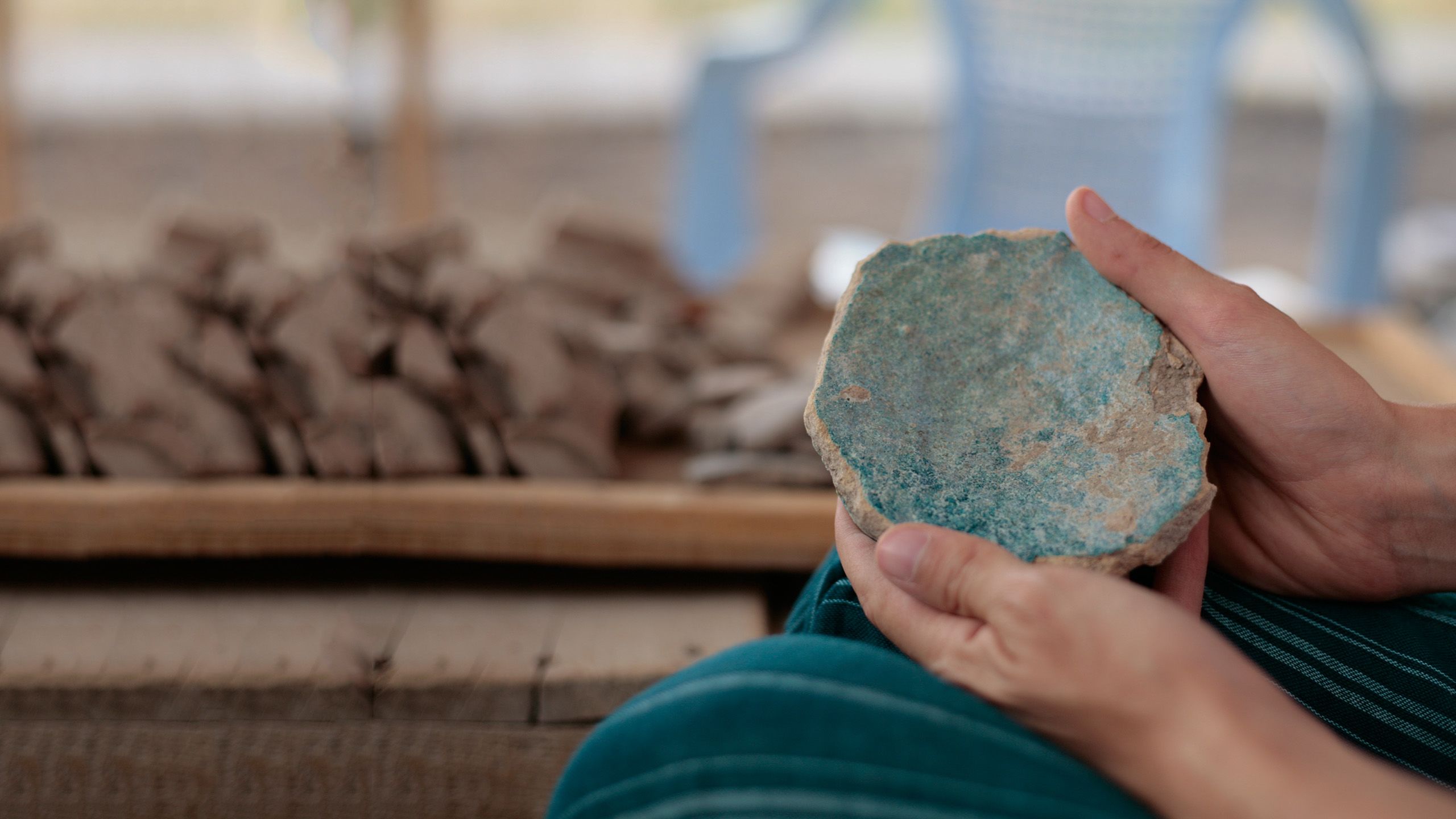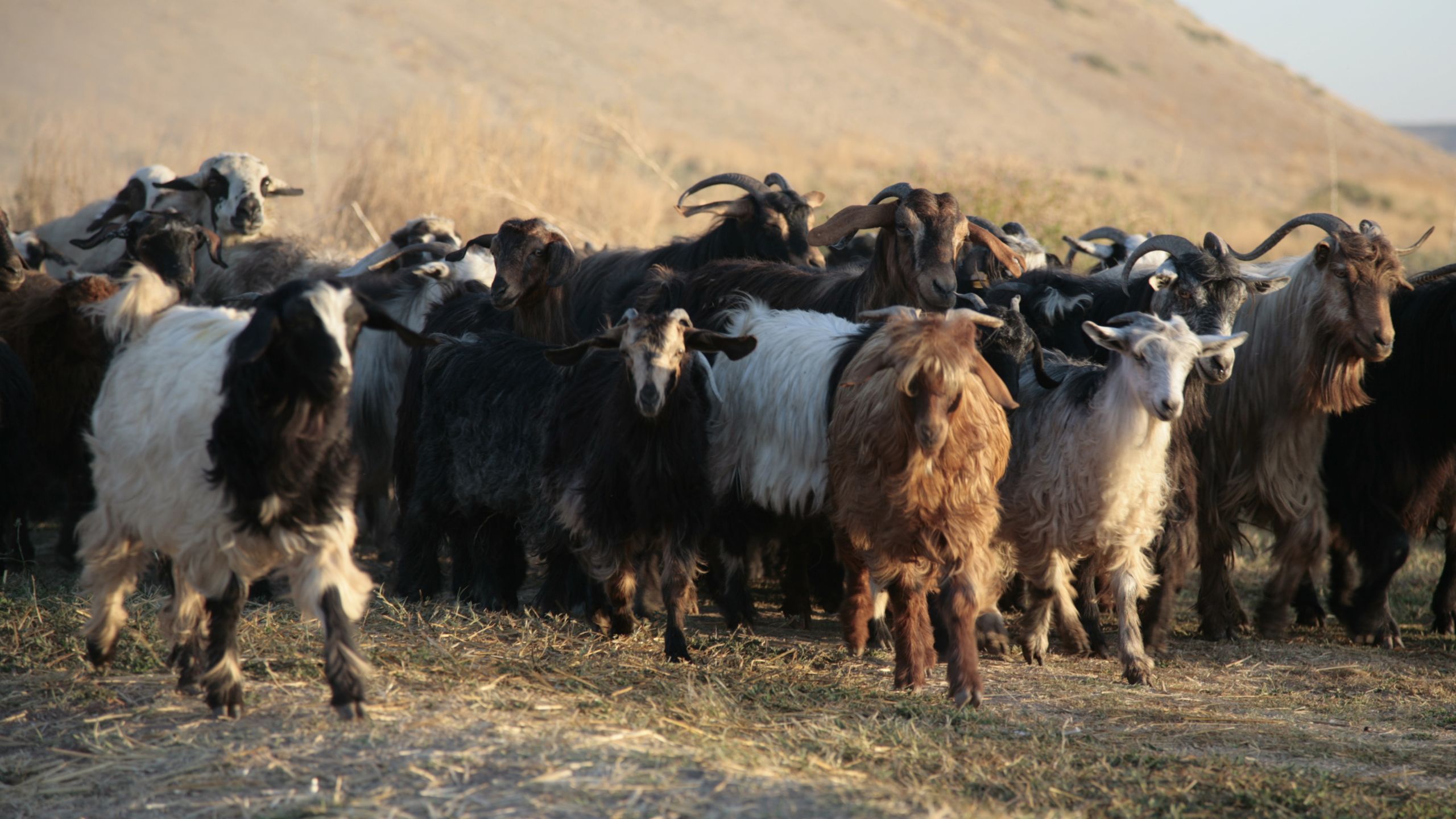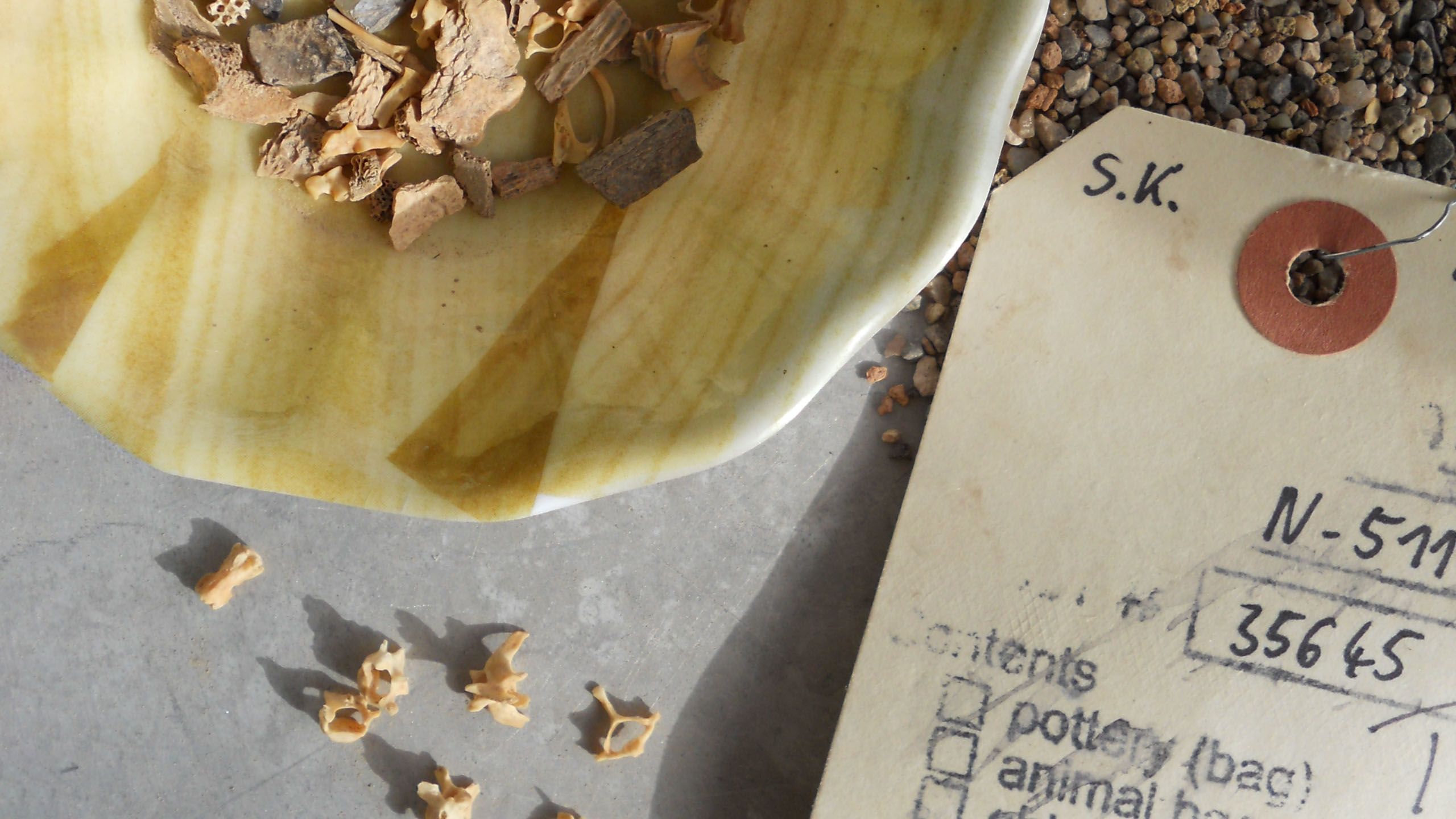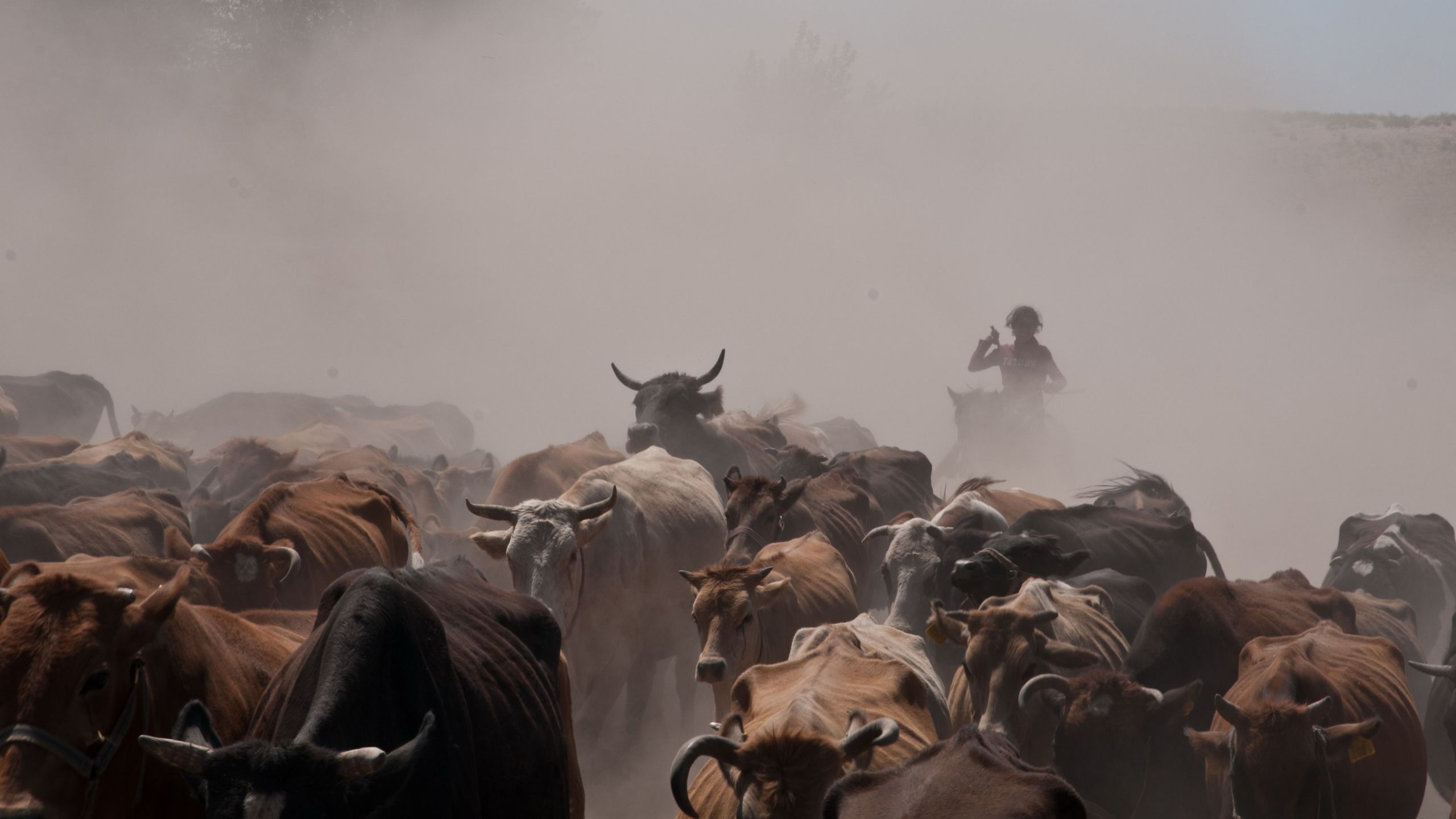A mound with a story
One mound, a fleet of 50 wheelbarrows, a 450-strong team and almost a million finds.
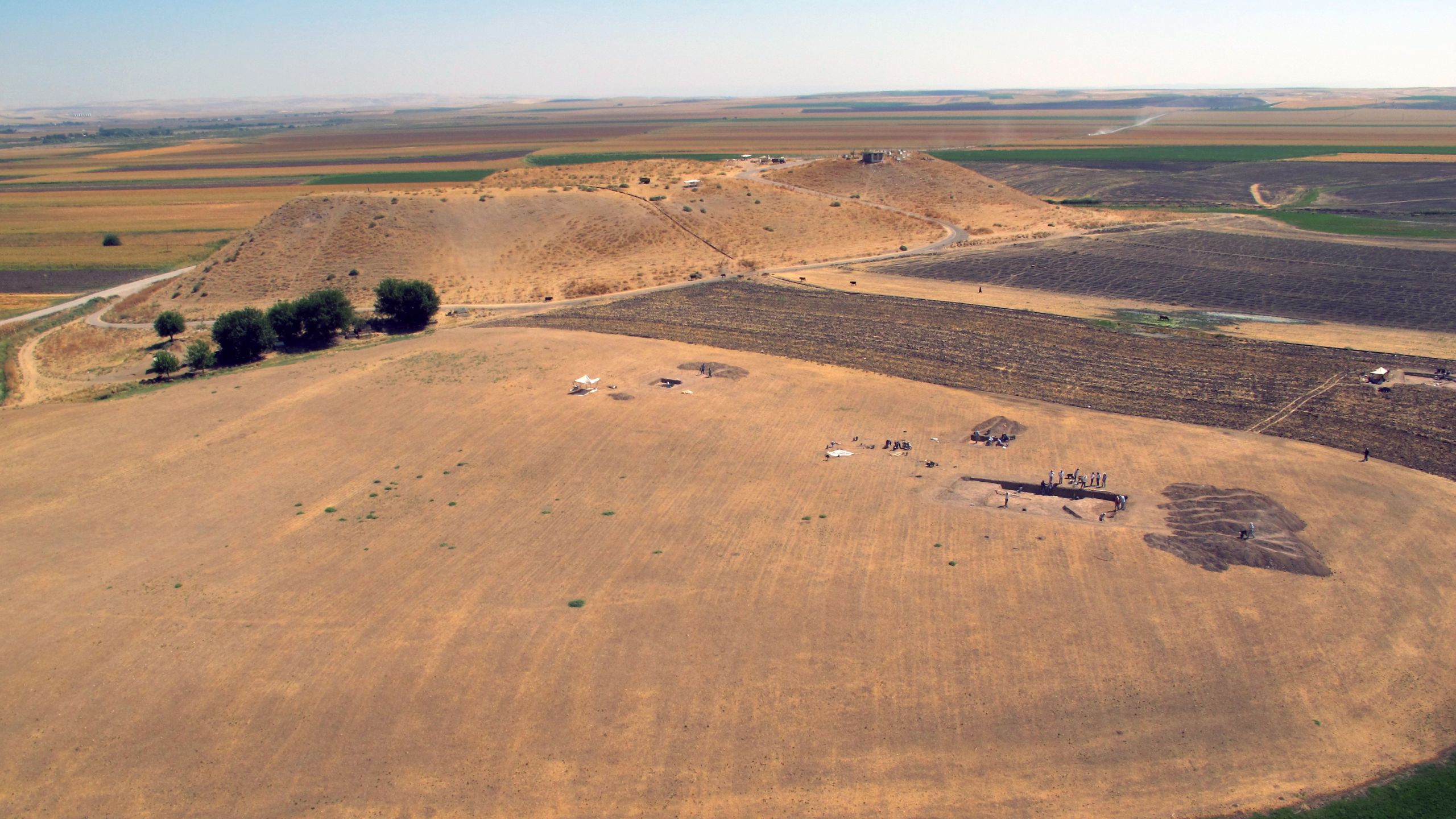
In southeastern Turkey, an ancient mound overlooks the Tigris River. The name of this mound is Ziyaret Tepe.
For more than 5,000 years, this mound stood sentinel over a region on the frontier of a succession of empires. Its greatest moment came as a provincial capital of the Assyrian Empire. Known in antiquity as Tushan, the city was a mighty fortified outpost guarding the north-western marches of Assyrian rule.
Plans for the construction of a massive hydroelectric dam prompted the excavation of a site that has intrigued archaeologists for decades. The investigations have been stunningly successful, bringing back to life the soldiers, farmers and administrators of an ancient city.
This is the story of a remarkable project.
In the mid-1990s the Turkish Ministry of Culture invited archaeologists from across the world to take part in a salvage campaign. A survey of the area to be affected mapped the rich archaeological heritage of the upper Tigris valley system, documenting hundreds of sites from the palaeolithic to the Ottoman era. This paved the way for programmes of archaeological excavations.
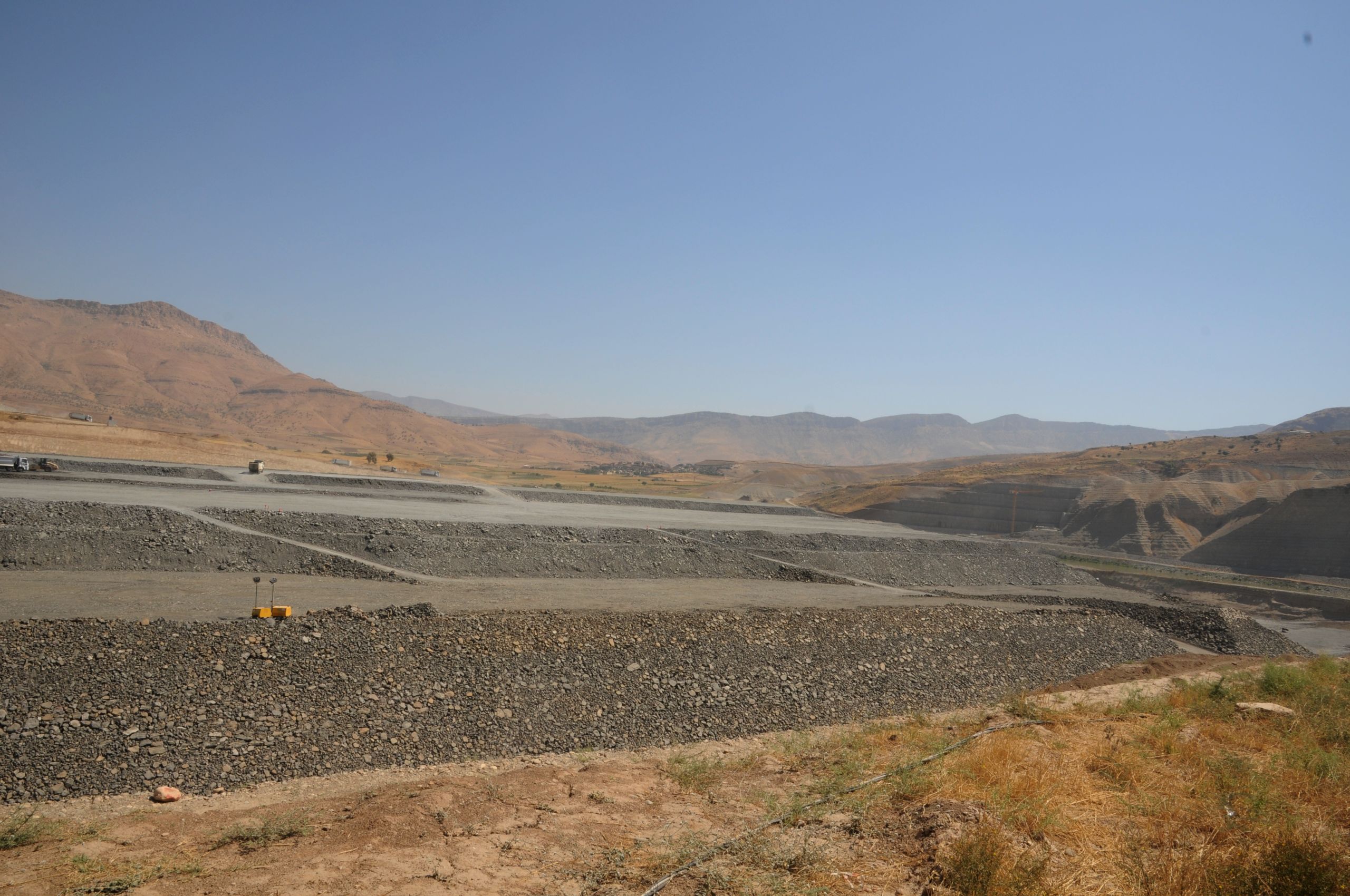
The Ilisu Dam under construction
The Ilisu Dam under construction
A team unites
One of the first archaeologists to respond to the Ministry for Culture’s call for archaeologists to work at Ziyaret Tepe was Professor Timothy Matney from the University of Akron, Ohio. In 1996 he was granted a permit to conduct fieldwork and work started in the summer of 1997. As the project developed, so did the team.
In 2000 Dr John MacGinnis, a Research Fellow at Cambridge’s McDonald Institute for Archaeological Research, joined the group. He was tasked with directing operations in the lower town. Soon after Professors Michael Roaf, Dirk Wicke and Kemalettin Köroglu signed up to the team. Later Professor Simo Parpola, one of the world's foremost Assyriologists (specialists in reading cuneiform writing) also became involved in the project.
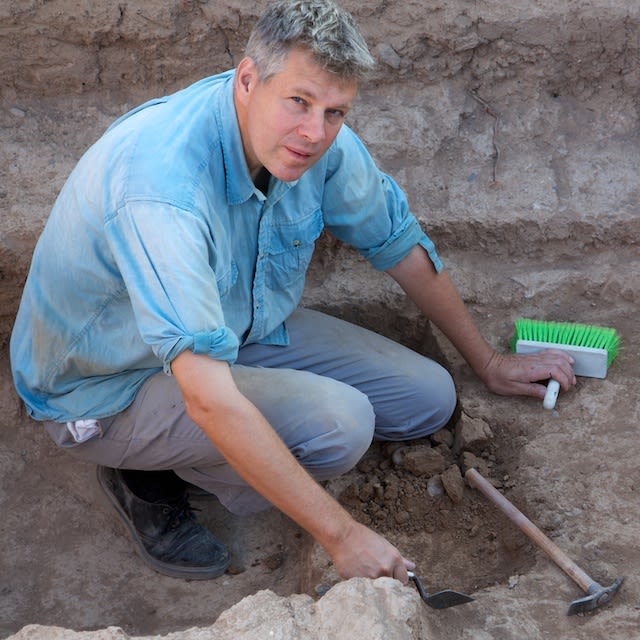
Dr John MacGinnis defines a pit
Dr John MacGinnis defines a pit
Through 18 seasons of fieldwork, more than 450 archaeologists and specialists from all over the globe worked on the site, united by their passion to uncover the secrets and rescue the treasures hidden within the mound.
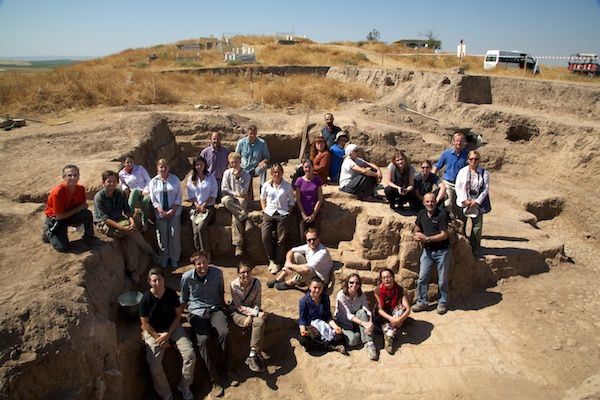
The 2012 team on the steps of the dig-house in Bismil
The 2012 team on the steps of the dig-house in Bismil
Doing the groundwork
Before the excavations could begin, the team created a topographic plan of the site. This plan provided the base for mapping the distribution of surface ceramics, a standard procedure in establishing the occupational history of a site. Another important step was a geophysical survey, the process of mapping sub-surface remains. Once this vital groundwork was complete, the excavations could start.
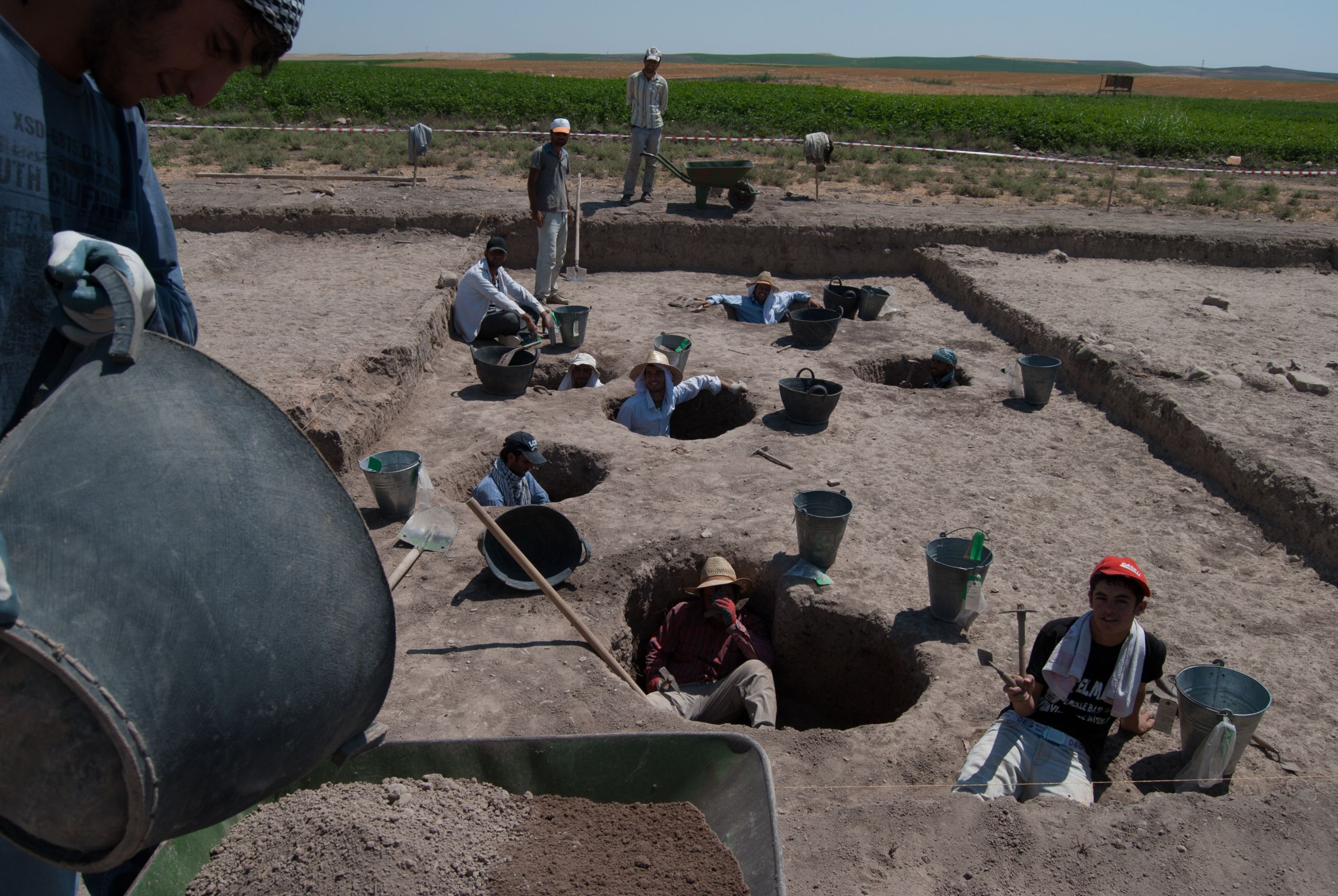
Work in the lower town
Work in the lower town
A day in the field
Each day the team would rise before the sun and work until the heat of the day became too intense, retiring for lunch and a siesta, before returning to the site in the cool of late afternoon. Back at base, they worked on the ancillary tasks of sorting pottery, registering finds, sifting and sieving environmental samples, and drawing plans of the excavations. The heat and the dust were constant companions but the team also faced the challenges of working in a rural environment where people depend on cultivating crops and rearing animals for their livelihood.
MacGinnis explains:
“Frequent power cuts affected both our computer systems and water supply. Irrigation of the cotton crop impacted the archaeology in the lower town and our ability to access it. There were many negotiations with the village over renting fields, hiring workmen, respecting holy sites and myriad other issues. Such conditions are part and parcel of Near Eastern archaeology and the team coped with them all.”
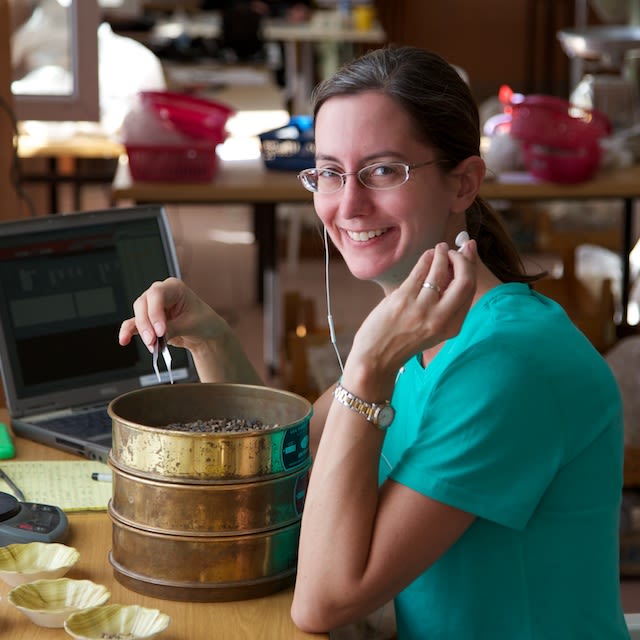
Britt Hartenberger sorting microdebris
Britt Hartenberger sorting microdebris
A city emerges
As the team removed layers of soil, slowly but surely the remains of a massive provincial capital began to emerge - private houses, elite residences, public buildings, a palace, fortification walls, gates, barracks and streets.
The excavation uncovered many items that offer clues about life at Ziyaret Tepe and confirm its status as a key hub within the Assyrian Empire. The team found seals used to authenticate documents, weights for measuring out commodities, and tokens used for accounting. These finds point towards a sophisticated society, standing at a crossroads of culture, language and ideas.
Other items paint a picture of domestic life and leisure - for example, knuckle bones used in board games, a fragment of an ivory comb, bronze pins, and spindle whorls used in weaving.
MacGinnis says:
“Working in this landscape and touching these objects connects you emotionally to the very human face of the first truly multinational empire.”
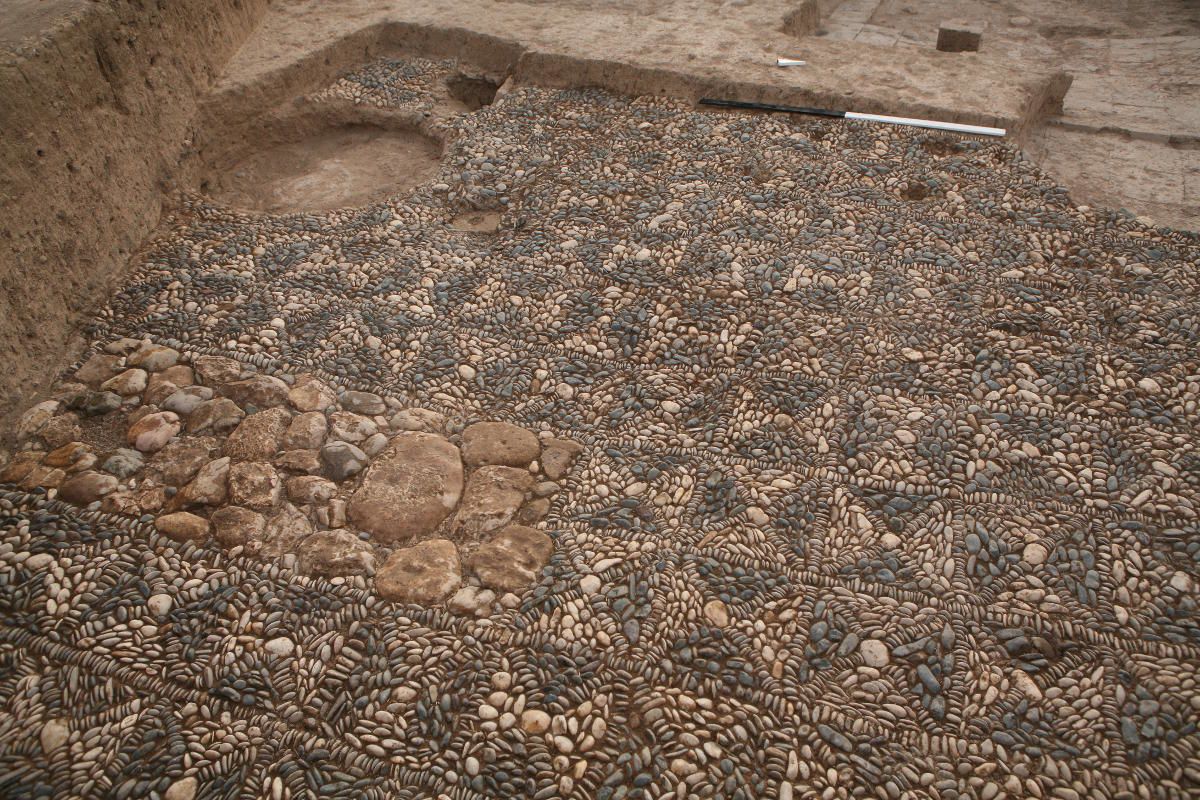
A section of the mosaic pavement in Courtyard 20
A section of the mosaic pavement in Courtyard 20
An unexpected find ...
The excavation exposed the mound’s best-kept secret - the remains of a royal palace. The dig revealed inner and outer courtyards paved with baked brick, numerous chambers, and a throne-room where the governor (or even the king on his rare visits to the region) would hold court and administer the province.
Archeologists believe that this building is the palace mentioned in an inscription of the words of King Ashurnasirpal II: “A royal palace for my kingship I had constructed at Tushan.”
Fragments of painted plaster, giving us a glimpse of how the palace walls were once decorated, were recovered from its floors more than two and half thousand years after the last voices echoed round its halls.
... and an unknown language
A cuneiform clay tablet found in the throne room listed women with names in a previously unknown language. This incredible find is evidence of the movement of a group of people from the Zagros mountains on the border of Iran to the Upper Tigris in Anatolia – a distance of hundreds of kilometres.
MacGinnis says:
“This find is material evidence of the policy of mass deportations which helped the Assyrians maintain control over their empire – a strategy of divide and rule. The tablet has confirmed previous theories and generations of scholars will continue to use it for research.”
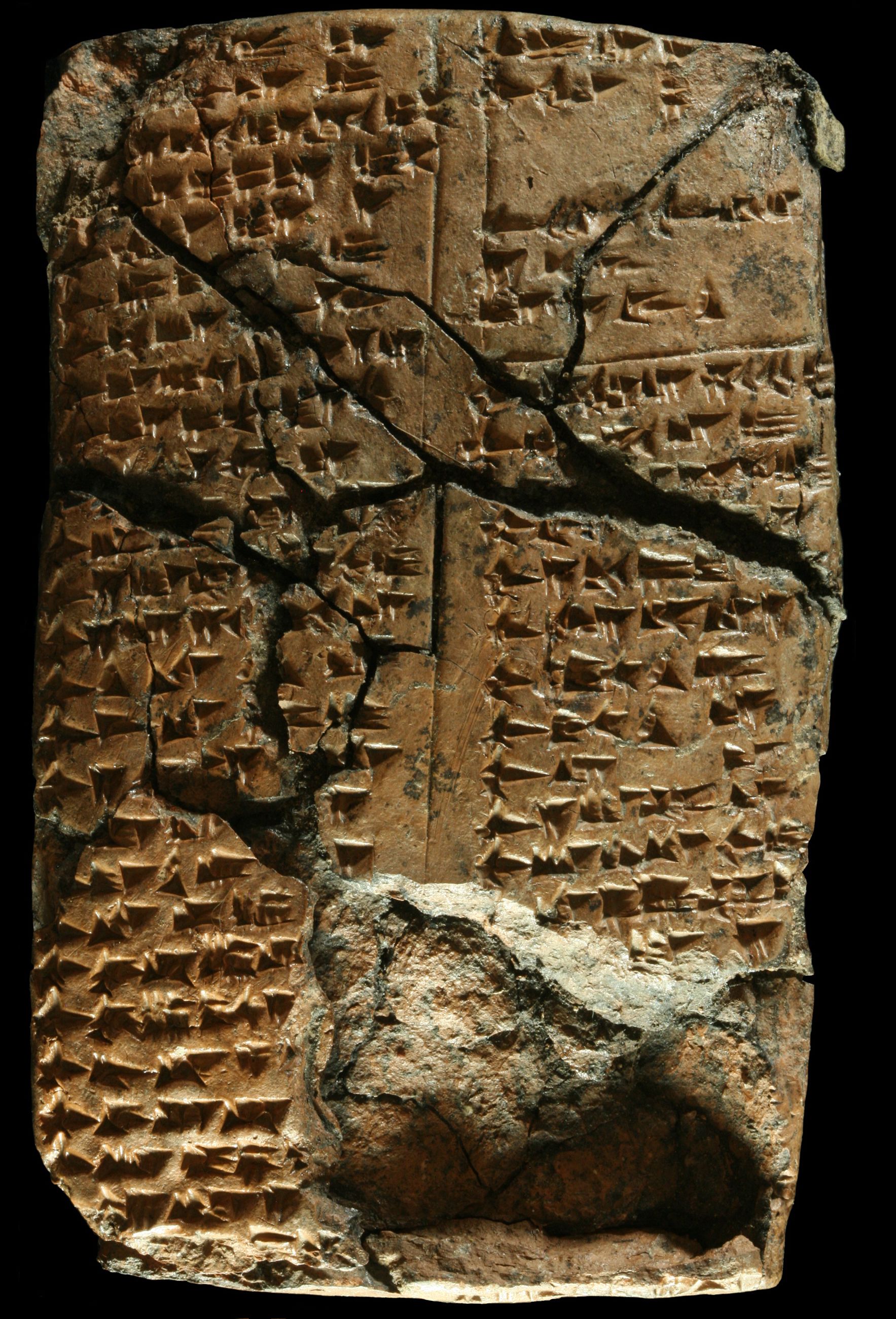
Cuneiform text from the palace throne room listing women whose names appear to belong to a previously unknown language
Cuneiform text from the palace throne room listing women whose names appear to belong to a previously unknown language
About Dr John MacGinnis
Dr John MacGinnis read Near Eastern Archaeology and Assyriology (the study of cuneiform texts) at Cambridge for both his BA (Trinity College) and his PhD (Darwin College).
He has worked on sites across the Middle East and South Asia. In 2000 he became a Research Fellow at the University's McDonald Institute for Archaeological Research.
At present MacGinnis is based at the British Museum in London as Lead Archaeologist in the Iraq Emergency Heritage Management Training Scheme, a UK-funded programme for Iraqi archaeologists.
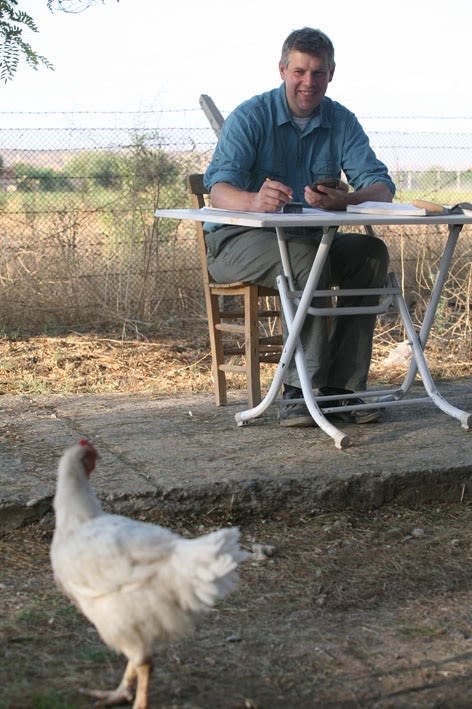
Dr John MacGinnis at work on deciphering a cuneiform tablet
Dr John MacGinnis at work on deciphering a cuneiform tablet
Q&A with Dr John MacGinnis
How did you become an archaeologist?
Arriving at Trinity College as a shy 18-year-old, I got invited to the wrong sherry party. A fascinating conversation about all kinds of ancient things prompted me to defect from Classics to Assyriology.
What’s the appeal of working in Turkey, Iran and Iraq?
The diversity of cultures both, ancient and modern. The opportunity, indeed necessity, of learning new languages. The wonderful friendliness and hospitality of the local people. The stunning landscapes. The rigours of working in remote places with the need to improvise with what's at hand. The excitement of being at the cutting edge of new discoveries. You can see that the life of a Near Eastern archaeologist is never dull.
What different types of materials did you find at Ziyaret Tepe?
Clay, metals, stones, shell, bone, ivory, glass, leather and textiles.
What was the most fragile find?
The painted wall plaster in the palace. The excavation, lifting, cleaning and conservation of this material took hundreds of hours.
What was the smallest find?
Tiny beads, just over 2mm in size, made out of fired-glass paste, coloured turquoise and white.
How many wheelbarrows did you use?
Too many! We regularly operated a fleet of upwards of 50 wheelbarrows. Keeping these properly oiled, fixing punctures, welding and repairing was an unending process.
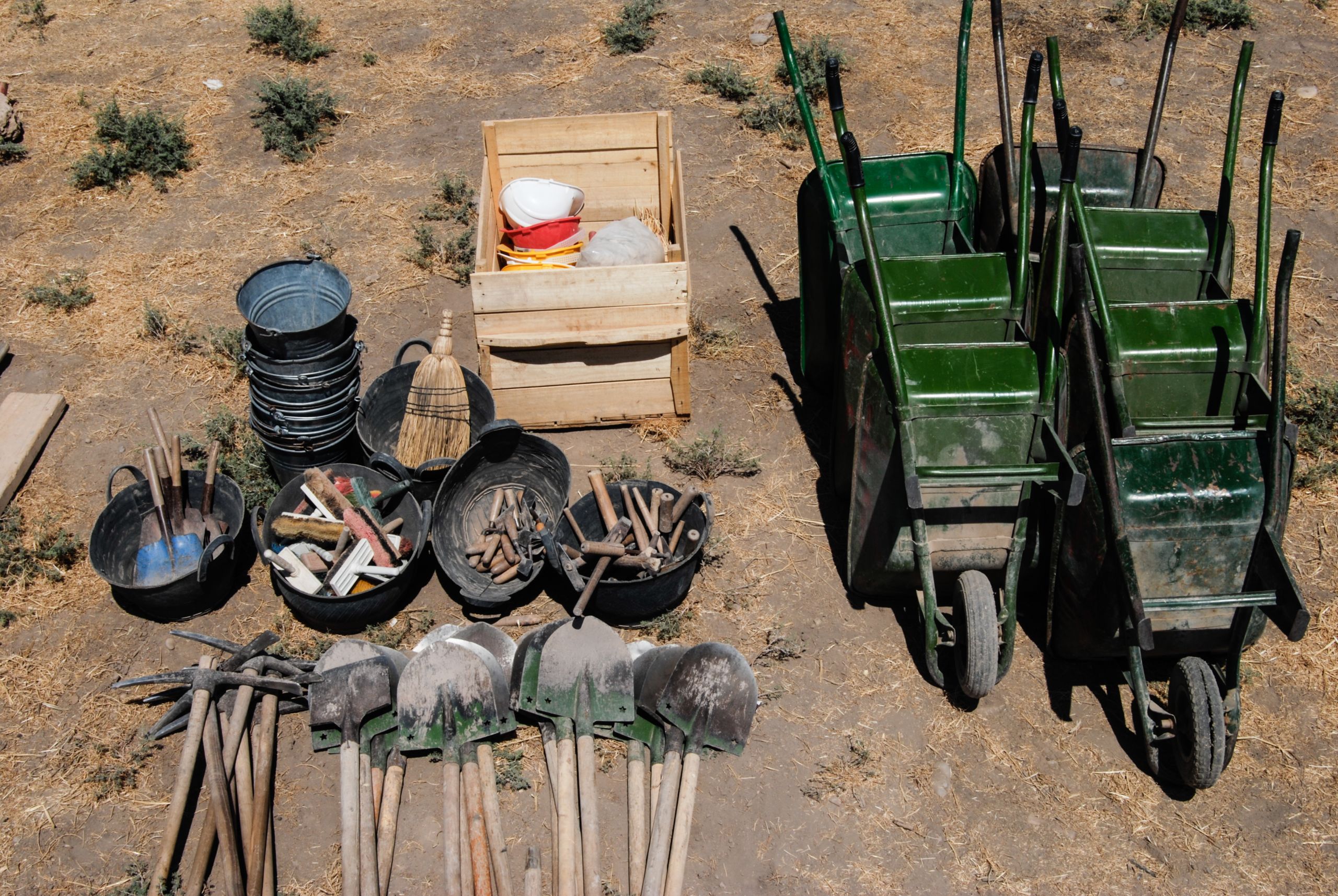
Wheelbarrows and other tools
Wheelbarrows and other tools
Which modern technology had the greatest impact?
Geophysical prospection. Techniques such as resistivity and magnetometry allow you to map the remains under the surface of the ground with great precision.
Who or what is the unsung hero of the dig?
In the Near East this has to be the small pick. It started life as an agricultural tool, but in trained hands this miniature version of a pickaxe is extraordinarily versatile. The small pick can be used for both robust jobs, such as freeing deposits of rubble, or very delicate tasks, such as uncovering the plaster face of a mud-brick wall.
What three things couldn't you live without on the dig?
Marmite, backgammon and a sense of humour.
What was your favourite meal of the dig?
That's a difficult question. Necmi Yaṣar, our cook, was exceptional, producing three meals a day, for up to 30 people, out of the tiniest of kitchens. This even included deliveries of hot breakfasts on site. The variety of his cuisine was extraordinary. I especially looked forward to his lentil soup spiced with cumin.
What kept you going day after day?
The camaraderie of a wonderful team and the excitement of being at the cutting edge of discovery, knowing that what we were unearthing was making a fundamental contribution to the field.
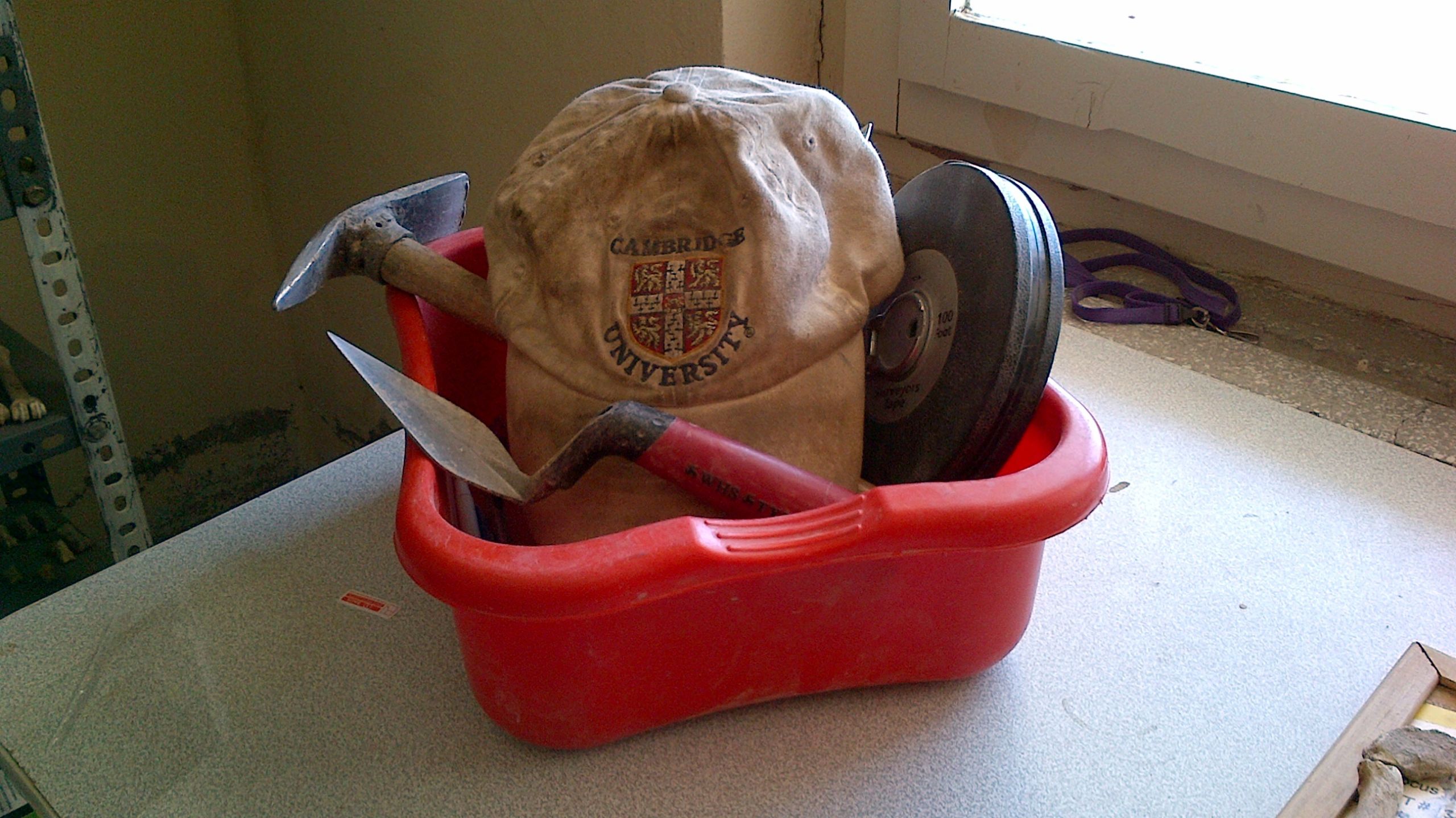
Digging tools (including a small pick)
Digging tools (including a small pick)
The story continues
The excavation of Ziyaret Tepe may have finished, but the true investigation of this ancient city has only just begun. Many mysteries remain unsolved: where did the inhabitants make their pottery, who tended their animals, and how many languages did people speak?
The artefacts and data laboriously collected in the field will form the foundations of study for archaeologists, specialists and students from all over the world. As the global research community pores over the vast archive of material, little by little, answers will emerge.
The discoveries from Ziyaret Tepe can be seen at the newly established Archaeological Museum in Diyarbakir. Set in the ancient kale (fortress), the museum has two rooms dedicated to the finds from the site. On display are many of the artefacts discovered by the team, as well as a reconstruction of a section of pebble mosaic pavement.
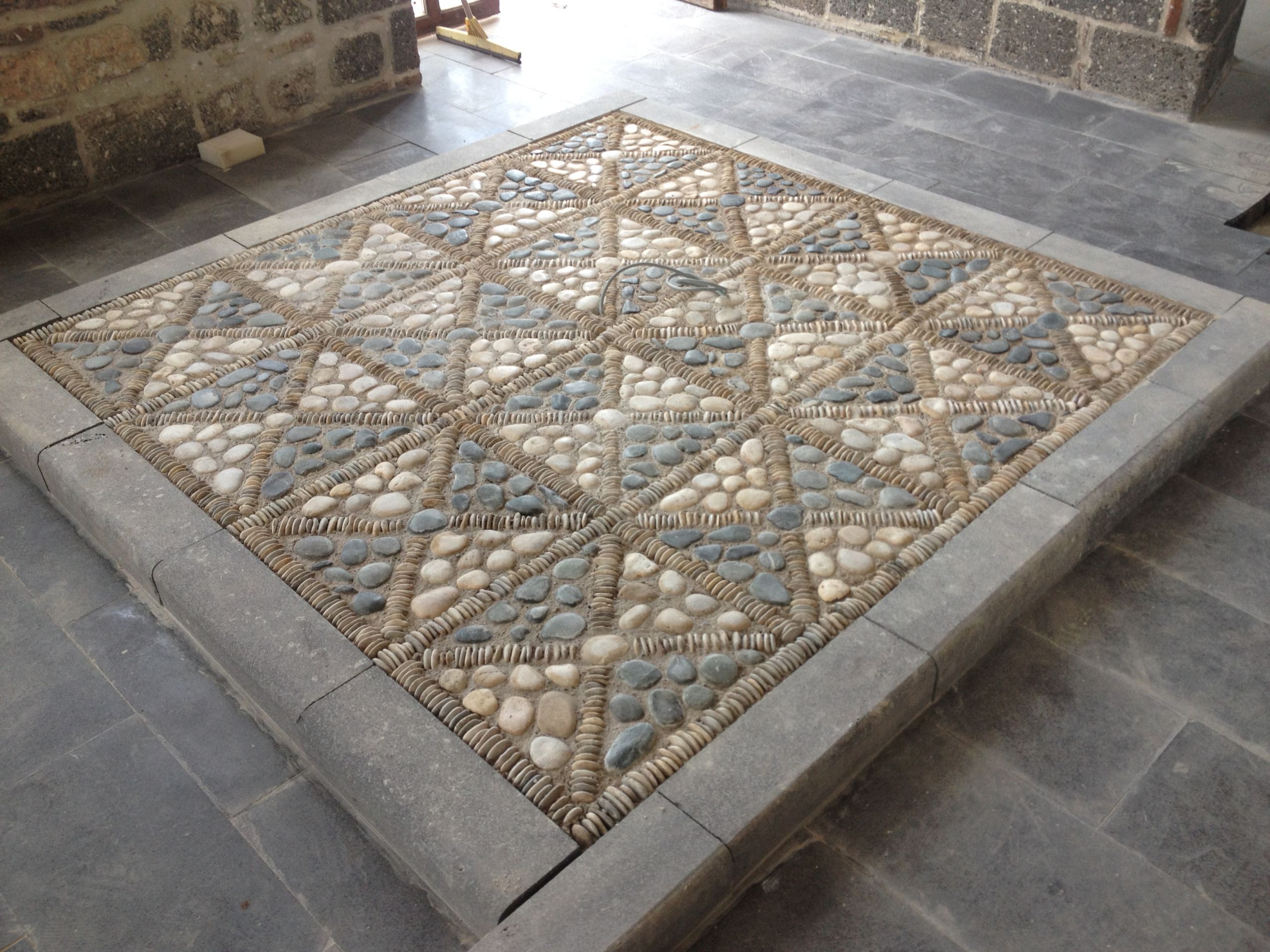
New mosaic in Diyarbakir Museum
New mosaic in Diyarbakir Museum
Told by the team who dedicated years of their lives to uncovering the secrets of Ziyaret Tepe, a newly released book records the story of the excavation and its marvellous finds. Both accessible and scholarly, Ziyaret Tepe - Exploring the Anatolian Frontier of the Assyrian Empire conveys the excitement and challenges of a great project, the combination of science, artistry and reconstruction that makes modern archaeology so absorbing.
Ziyaret Tepe - Exploring the Anatolian Frontier of the Assyrian Empire was recently awarded the Felicia A Holton Book Award of the Archaeological Institute of America. The award is given for excellence in communicating the excitement and importance of archaeology to the general public.
Copies of Ziyaret Tepe - Exploring the Anatolian Frontier of the Assyrian Empire are available from Cornucopia Press.
